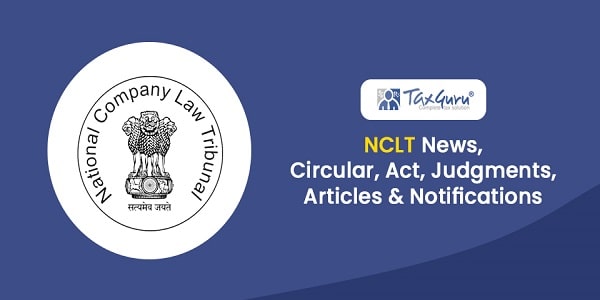In the current situation, the major investing organizations across the world review the non-financial data to take decisions on investment in any new venture or project. It provides trust to the interested parties to a business, such as financial & capital providers, customers, regulatory bodies, suppliers & subcontractors, workforces, population affected by the operation of the business, civil societies, & the public. In recent years, sustainability reporting has become a very important part of Integrated Reporting, which combines both financial and non-financial parameters including overview of a company’s commercial, ecological and social impacts, caused by routine business operations & endeavours.
Organizations progressively seen as critical elements of the social system, they are answerable not only to their shareholders from a revenue and profitability perspective but also to the larger society which is also its stakeholder. Businesses should not only report the positive but also the negative impact of their operations. This ensures accountability of the businesses for their social and environmental impacts.
The United Nations Sustainable Development Goals (UNSDG) is a key handler to most of the sustainability reporting frameworks. There are 20 countries that have ten or more reporting frameworks in their country, with the United Kingdom having the maximum with 21 of them. As per Carrot and Sticks report (https://www.carrotsandsticks.net/), out of 84 major economies by GDP, there are 614 sustainability reporting instruments, of which 350 are mandatory, and the rest 264 are voluntary. 93% of the world’s largest 250 corporations report on their sustainability performance through Global Reporting Initiative (GRI) and is used in over 100 countries to report sustainability. It is developed with true multi stakeholder contributions and rooted in the public interest. Materiality assessment done globally is the process of identifying & assessing numerous potential environmental, social and governance issues that could affect your business, and/or your stakeholders. Numerous materiality issues are recognized and reported worldwide, highest being labour related issues. Major sustainability reporting instruments used across different countries are –
- Global Reporting Initiative (GRI) Sustainability Reporting Standards
- International Federation of Accountants (IFAC) ISAE 3000
- The Organization for Economic Co-operation and Development (OECD)
- Guidelines for Multinational Enterprises
- The United Nations Global Compact (the Communication on Progress)
- The International Organization for Standardization (ISO 26000 – International Standard for Social Responsibility)
U.N. Sustainable Development Goals (SDGs) and Reporting – Sustainable Development Goals (SDGs) were adopted by the United Nations (UN) in 2015 as a call for action by all the 192 member states in a global collaboration for harmony and wealth of the people and environment, in a long-term perspective. It has set 17 sustainable goals for 2030 covering all issues relating to poverty, environment, society, culture, human rights, and economic growth. It intends to think creatively on the sustainability challenges of today, creating the right alliances, and taking the appropriate measures. Most of the nations have made monitoring framework & guidelines to meet these objectives of sustainability & the companies mention the same in their annual corporate report.
The most referenced Goals in the reports were:
- SDG 13: Climate Action (88%),
- SDG 12: Sustainable Cities and Communities (79%) and
- SDG 8: Decent Work and Economic Growth (73%).
Least prioritized goals in the report were:
- SDG 1: No Poverty (24%),
- SDG 14: Life Under Water (24%) and
- SDG 6: Peace and Justice – Strong Institutions (29%)
It is the accountability of the corporations to respect & safeguard the human rights of the vulnerable communities and displaced people/ people migrated to different regions across the globe. The Indian subcontinent and Sub-Saharan Africa had little progress in comparison with the rest of the world in these goals. Consequently, comprehensive sustainability goals became vital to bring prosperity to everyone. The five Ps of SDGs are People, Planet, Prosperity, Peace, Partnership.
India became a member of UN sustainability development goals in September 2015. India ranking of Sustainable Development Goals 2020 is 117th /193 nations on SDG index and score: 61.92/100. Current flagship policies and programmes of Government of India such as Swachh Bharat Mission (SBM), Beti Bachao Beti Padhao (BBBP), Pradhan Mantri Awas Yojana (PMAY), Pradhan Mantri Jan-Dhan Yojana (PMJDY), Deen Dayal Upadhyay Gram Jyoti Yojana (DDUGJY) and Pradhan Mantri Ujjwala Yojana (PMUY) have substantially contributed to India’s progress in this regard.
Chronology of event lead to the development of Business Responsibility and Sustainability Reporting (BRSR)
- In July 2011- MCA released National Voluntary Guidelines (NVGs) for sustainability reporting.
- In August 2012- SEBI issued a circular for the top 100 listed companies to disclose Business Responsibility Reporting (BRR) in line with National Voluntary Guidelines (NVG).
- In 2015- United Nations Sustainable Development Goals 2030 were released.
- In 2015-16- The applicability of Business Responsibility Reporting (BRR) extended to the top 500 listed companies of India.
- In March 2019- MCA revised the National Voluntary Guidelines (NVGs) to National Guidelines on Responsible Business Conduct (NGRBC).
- In December 2019- The applicability of Business Responsibility Reporting (BRR) extended to the top 1,000 listed companies of India.
- In August 2020- MCA report on Business Responsibility Reporting (BRR) with the proposed BRSR.
- In March 2021- Sustainability Reporting Standards Board of ICAI developed the scoring mechanism of the BRSR i.e., Assigned scores to Business Responsibility and Sustainability Reporting (BRSR).
ICAI intends that companies should accelerate in making a positive impact in society. Companies should report and disclose non-financial information as well. Corporates will be able to assess their sustainability maturity level & it will benefit them in enhancing their scores.
An advanced solution which each company complying with BRSR can use to individually assess its situation via various sustainability reporting maturity level.
- Level 1, Level 2, Level 3 and Level 4 of Sustainability Maturity of corporates have been defined based on the total range of scores obtained by a corporate in a financial year as per the BRSR scoring mechanism.
- Leadership Indicators have been given prominence by allocating a score of 75 for encouraging companies to target achievement of the same.
The BRSR framework uses a two-format approach:
i. Comprehensive BRSR – Comprehensive BRSR has been developed for the top 1000 companies listed in India and may be stretched to several unlisted companies that meet specified thresholds of turnover and/or paid-up capital. Business Responsibility and Sustainability Reporting (BRSR) scoring mechanism comprising total 300 scores (225 Section A, B, C – Essential Indicators Score and 75 Leadership Indicators Score). This approach consists of 3 sections and 9 principles:
| Section A: General Disclosures |
| Section B: Management and Process Disclosures |
| Section C: Principle Wise Performance Disclosure |
| Principle: 1 Businesses should conduct and govern themselves with integrity in a manner that is Ethical, Transparent and Accountable |
| Principle: 2 Businesses should provide goods and services in a manner that is sustainable and safe |
| Principle: 3 Businesses should respect and promote the well-being of all employees, including those in their value chains |
| Principle: 4 Businesses should respect the interests of and be responsive to all its stakeholders |
| Principle: 5 Businesses should respect and promote human rights |
| Principle: 6 Businesses should respect and make efforts to protect and restore the environment |
| Principle: 7 Businesses, when engaging in influencing public and regulatory policy, should do so in a manner that is responsible and transparent |
| Principle: 8 Businesses should promote inclusive growth and equitable development |
| Principle: 9 Businesses should engage with and provide value to their consumers in a responsible manner |
ii. BRSR Lite – BRSR has been developed for unlisted companies unfamiliar with the groundwork of sustainability reporting. This format will encourage more companies to begin sustainability reporting as it is easier for all companies to adopt this format. The adoption of BRSR Lite would be voluntary for such companies. The underlying principle behind this thinking is that the implementation of reporting requirements would be done in phase manner, so that smaller companies would get the time to adapt and learn from the larger ones.
Business Responsibility and Sustainability Report (BRSR) – Comprehensive & lite Scoring mechanism:
| Level | Level 1 | Level 2 | Level 3 | Level 4 |
| Stage | Formative Stage |
Emerging Stage |
Established Stage |
Leading by Example |
| BRSR Score (Percentage of Grand Total Score) | Up to 25% | > 25% and Up to 50% |
> 50% and Up to 75% |
> 75% |
| Explanation | Organisations are at the initial level of reporting & are in the process of identifying the need and responsibility of BRSR. | Organisations realize the value of BRSR and responds to it by setting up robust mechanism for reporting, etc. |
Organisations have established formal functions/ policies/ systems for BRSR. | Organisations strive for more than compliance and work towards being a market leader. |
| Try to establish policies/ systems for data collection and disclosures. |
Functions/ policies/ systems for such reporting is still to be formalized/ focused |
Involved in compliance functions, etc., and focus increasing on qualitative aspects. |
Strategically differentiating by enhancing disclosures vis a vis innovative methods/ techniques employed. |
|
| Organisation is working towards establishing/ enhancing internal controls, data collection and disclosures. |
It is a self-assessment tool supporting corporates in sustainability reporting & its formats are generic i.e., they are applicable to all business sectors. However, some clauses may not be applicable to some business. Therefore, in case of non-applicability of disclosure requirements to a particular company, the Grand total score obtained in BRSR scoring should be slashed accordingly. Grand total score should be calculated only considering the applicable clauses to a particular corporate. Companies can self- evaluate their current level of maturity on the Sustainability Reporting Maturity Model and can identify areas where more attention is required. This will in turn help then in developing a road map for upgrading themselves to a higher level of maturity. Through this model, rating agencies and assurance providers would be able to compare the sustainable nature of the Indian companies with other international companies, being an innovative concept in the sustainability ecosystem.
Source of article: ICAI Releases Sustainability Reporting Maturity Model Version 1.0
Background Material On Business Responsibility And Sustainability Reporting



























